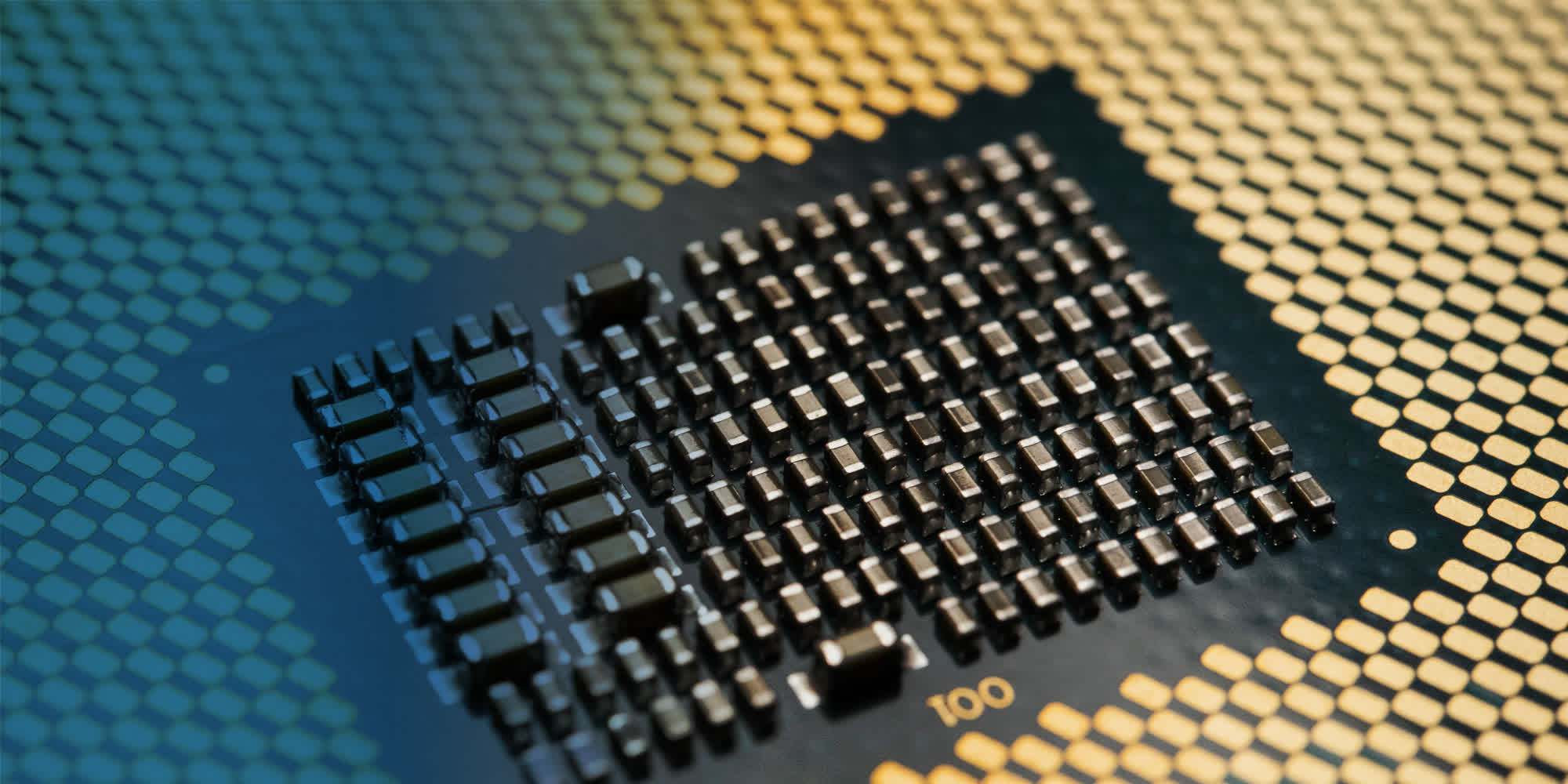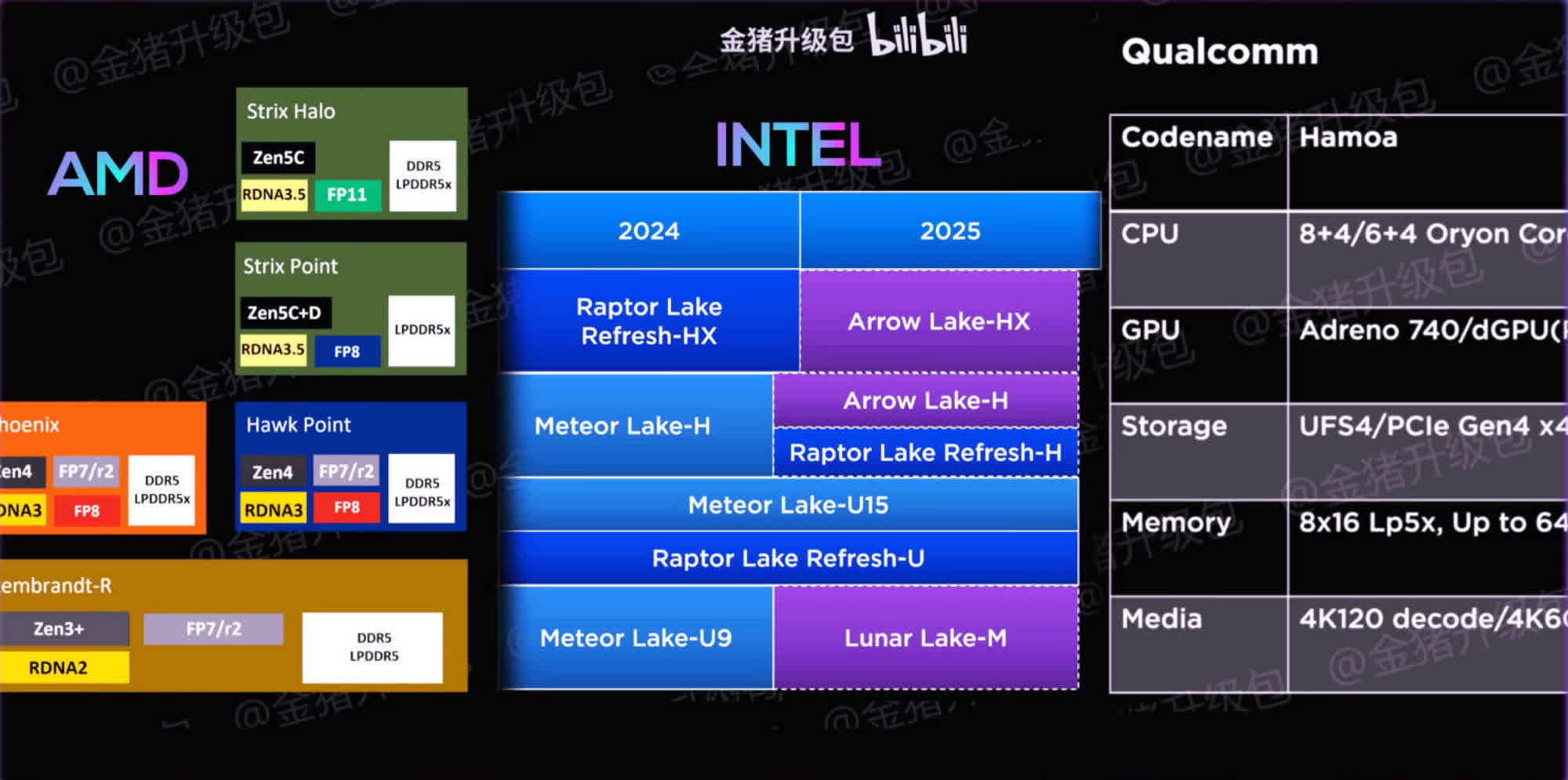Something to look forward to: Major CPU manufacturers are continually engaged in developing new chip architectures and products. The rumor mill is ceaseless, and a recent Chinese source has now divulged detailed business plans for three of the world's largest chipmakers.
A Chinese content creator has unveiled a comprehensive roadmap for future CPUs from Intel, AMD, and Qualcomm. The roadmap provides details about upcoming chip architectures, some of which were already known, and additional information, possibly from unofficial but well-informed sources.
Starting with Intel, the video from "Golden Pig Upgrade Pack" outlines Intel's CPU lines and architectures planned for 2024 and 2025. These plans include a Raptor Lake refresh for slightly faster desktop CPUs, and laptops that'll feature Meteor Lake.
Intel-based portable systems will also receive updated Raptor Lake (Core Gen 13th) processors, although the inclusion of Meteor Lake CPUs in gaming laptops may be an exception. In 2025, Intel will introduce the new Arrow Lake architecture to replace Raptor Lake-H and HX portable chip models. A refreshed "U-series" option will be retained for low-end systems.
The Chinese leaker has also presented an updated roadmap for AMD. Lisa Su's company is currently developing two new APU chips, informally referred to as Strix Halo and Strix Point. Strix Halo is built on the new Zen 5 microarchitecture and will feature traditional ("Classic") Zen cores on the new "FP11" socket.
Strix Point appears to have a more intricate design, with two different types of Zen 5 cores: "Classic" and "Dense." Support for DDR5 and LPDDR5X memory is exclusive to the Halo chip, while both Strix Point and Strix Halo incorporate AMD's RDNA3.5 GPU architecture with 16 Compute Units (Point) and 40 CUs (Halo). AMD will also provide refreshed Zen 4 APU options (Hawk Point, Phoenix) and the "Zen3+" based chip Rembrandt-R for the low-end market.
Finally, we have some updated information about "Hamoa," the first Snapdragon X mobile SoC created by Qualcomm. Hamoa will feature either 10 or 12 CPU cores and an Adreno 740 GPU with support for an additional discrete GPU for graphics processing through a PCIe Gen4 x8 interface.
The Hamoa SoC also offers features for high-speed storage (UFS4, PCIe Gen4 x4 NVMe), LPDDR5X memory support with speeds up to 8533 MT/s, and fast video encoding capabilities (4K60). Qualcomm appears to be developing a mobile chip that could perform effectively in both next-gen smartphones and Arm laptops. Now it's up to OEM manufacturers to seize the opportunity and create computing devices based on this technology.

